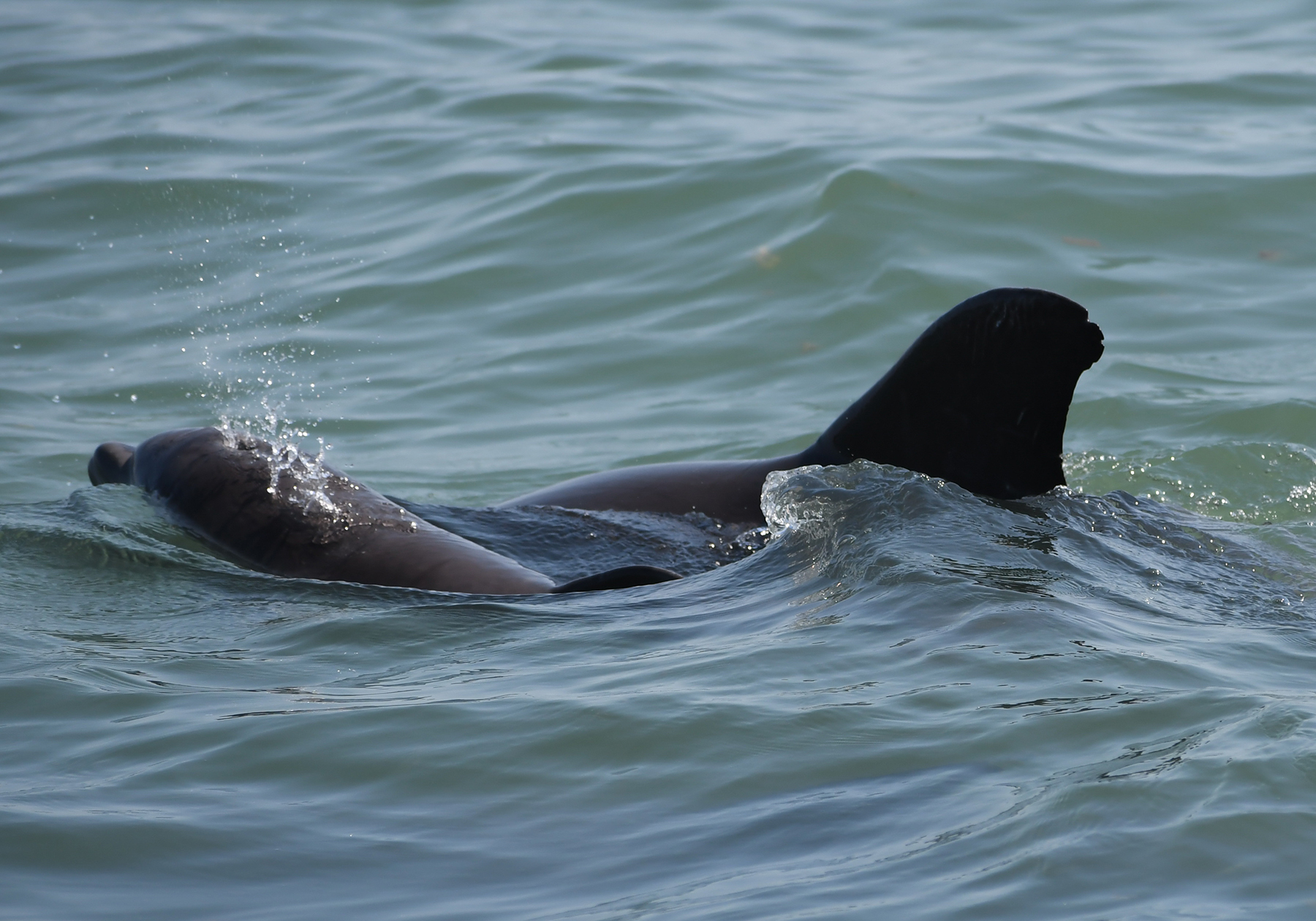Over just 2 weeks in August, we lost three Sarasota Bay resident dolphins. Our Director, Dr. Randy Wells penned this special message to share the news and let you know how you can help:
In an unprecedented year of pandemic and societal upheavals, August has dealt us another blow at the Chicago Zoological Society’s Sarasota Dolphin Research Program (CZS-SDRP). We were blindsided with the deaths of three resident dolphins — two adults in their prime reproductive years and the first documented calf of the 2020 season — within just two weeks.
These deaths were caused by human activities and could have been prevented.
All three of the dolphins killed recently were well-known to our Program. They had been observed frequently during our monthly population monitoring surveys, where we’re able to identify individual dolphins from the characteristic features of their dorsal fins. The carcasses of each were recovered by Mote Marine Laboratory’s Stranding Investigations Program (SIP), and necropsies (animal autopsies) identified the probable causes of death.
Two likely died from hook-and-line fishing gear, and the third was killed by a boat strike.
In the 50 years we’ve been studying the 170-member dolphin community in Sarasota Bay, we have never before documented three resident dolphins dying from human activities within a two-week period.
This situation is particularly striking in light of what is being reported from many places around the world, where the pandemic seems to be easing human pressure on wildlife populations. In contrast, human activities in Sarasota Bay have increased with the pandemic. In combination with increased mortalities from non-human-related causes, this rate of additional loss is unsustainable for our local dolphin community.
The local dolphin community will feel the loss of these dolphins for decades to come. From a biological standpoint, the deaths of these dolphins result in a great deal of lost reproductive potential — the adult male and female and new calf can no longer produce offspring that would have helped to sustain and grow this community of dolphins.
This is also an intrinsically emotional loss — not only in the fact that we can tell the stories of each of these individual animals and their relatives thanks to our 50 years of study in Sarasota Bay, but also because of the idea that each of these deaths could have been prevented.
I share this news with you today so that you can join us in working to prevent more dolphin deaths from human activities just by following a few simple guidelines that we’ve helped to develop based on the knowledge we’ve gained during our studies — of watching both the dolphins of Sarasota Bay as well as the humans who use it.
All three of these dolphins — our neighbors in Sarasota’s coastal waters — had their lives cut short by human activities. None of them were given the opportunity to reach their full potential, living long, productive lives in our shared coastal waters.
As we approach the Labor Day boating holiday, let’s be particularly attentive to the impacts we can have on these animals as they try to make a living in their home waters.
Watch out for dolphins in your path, especially in shallow waters where they cannot dive beneath your boat. If dolphins appear while you are fishing, reel in your lines until they leave, or move to another site.
If you’re boating in Sarasota or Manatee counties and see an injured or dead dolphin, please report it immediately to Mote’s SIP at 941-988-0212 to give trained responders the best chance of rescuing or recovering the animal. If you are outside of those counties, please call Florida’s wildlife hotline: 888-404-3922 (FWCC).
Together, we can help to sustain our local dolphin community! Here’s wishing you fair winds and dolphin-safe fishing and boating,
Randy Wells
1256
This 4-month-old dolphin was the sixth calf of a resident female named Annie. He was recovered on Aug. 13, 2020, and had been the first documented birth in Sarasota during 2020. He was part of a well-known, five-generation maternal lineage. When found, he was entangled in fishing line, with half of his tail nearly severed. Three of his five siblings had died previously, one shortly after birth and two during the 2018 severe red tide.
BARK
BARK was a 31-yr-old male recovered on Aug. 16, 2020. Mote Marine Laboratory’s Stranding Investigations Program found a fish hook embedded in his throat and fishing line coming out of his mouth. We had observed him 266 times since we first identified him in 1993. Paternity testing by Portland State University indicated that he had sired at least one, and possibly two other resident calves. In comparison, we have documented other Sarasota males living to age 52 and siring seven or more calves during their lifetimes.





